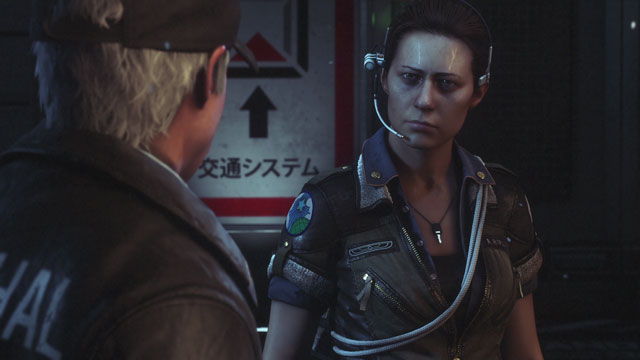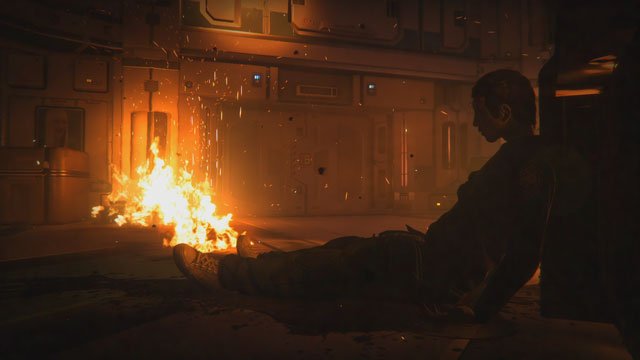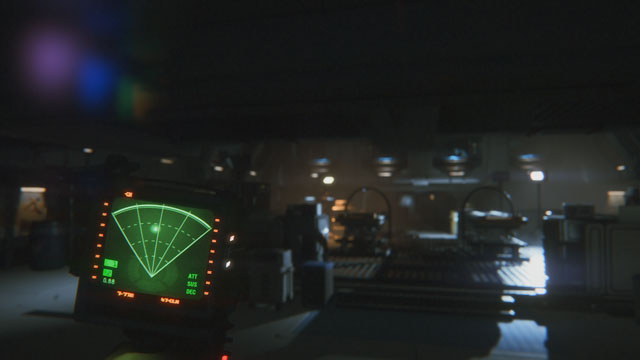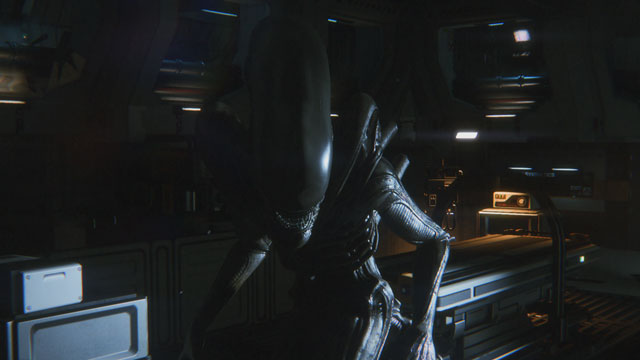Maybe not in space, but in your living room, your neighbors can probably hear you scream.
Alien: Isolation is probably the scariest game that I’ve ever played. At a recent event in San Francisco, Sega and The Creative Assembly let the press play it for a solid five hours. It was different than other times I’d played the game, as it was further along in the story and the Alien seemed smarter, a more capable hunter, and the encounters were deadlier.
At first it was nearly impossible. The levels, which included the section shown in the E3 demo, seemed almost impassible. The Alien heard everything, it found me everywhere, or alternatively, I had to continuously hide and risk being spotted. You can’t kill it, a few blasts with a handgun only pissed it off, and soon I had a second mouth snap towards my face followed by darkness. It was then that we were told by Sega staff that the game settings had defaulted to the hardest available setting, “Difficult.”
Alien: Isolation is hard on “medium," and on “difficult” you are clearly playing movie-level difficulty. One of the most terrifying things about the game is how well it leverages the first-person perspective. I was told by some Sega representatives that the game had started out in third-person, but it’s hard to imagine it being as terrifying to be hiding in a cabinet and have “The Creature” approach, having to lean back and hold your breath, which eventually starts to take a toll on your health, before it finally turns and stomps out of the room.
The score and sound design are paramount to this fear effect. There’s a moment of dread that comes up naturally as soon as the Alien comes near. Even if you can’t hear it moving around, the ominous strings begin, and the amazing surround sound makes it clear where everything is around you, as you have to choose either to hide, sneak, or run to try and find safety. Of course, running attracts the beast, and potentially other threats, like androids or human survivors.
We had no access to the game’s flamethrower, just a molotov cocktail to drive The Creature away—no one calls it an alien here, and “xenomorph” was coined in Cameron’s Aliens, set decades after the game. Not that it was that simple; the molotov had to be built using the game’s crafting system. Similar to the system in The Last of Us, weapons and distractions could be crafted by collecting the scarce resources in the levels. Unfortunately, instead of the molotov, I made a health pack, as Ripley’s health began to get low.

At first it’s jarring being referred to as “Ripley,” with a new protagonist who doesn't have Sigourney Weaver's likeness, but it’s a smart move on Sega and Creative Assembly’s part. As they've gone with Ellen Ripley’s daughter, Amanda, and a long timeline where the original film character remains in cryo-sleep between the films, there’s plenty of franchise-able material in this time period. It also gives them the leeway to build any story they want with the character, who is largely an unknown in the films.
The added time with the game allowed me to get more of a general feel for the story. Ripley’s story, such as it was in this section, was to find medical supplies to stabilize a friend who’d been wounded in another area. The larger overarching plot is told in emails on the dilapidated 1970’s retro-future computers and audio logs. Alien: Isolation is set on a space station comprised of three towers that appears to be owned by a competitor with the villainous monolithic company from the films, Weylan-Yutani, trying to make a competitive android product called Average Joe. The audio logs involve tales of corporate espionage between the companies, indicating perhaps how the The Creature ended up on the station in the first place.

My playthrough wasn't completely perfect; in one panicked section, where time and health were running out, it was necessary to look up to see something that would help the situation. There were no visual or cues to look up, and I was unable to complete it (dying over and over) until a PR spokesperson told me where I had to go. This is a consistent problem in game design: Players do not naturally look up during puzzles (Portal 2 writers Chet Faliszek and Erik Wolpaw addressed this in a 2012 talk at GDC about 15 minutes in) and need to have control of the camera taken away from them (Naughty Dog links where the player needs to look to an optional button press) or a very clear visual design cue leading upward. However, this was one small problem in an otherwise awesome gaming experience.
The set design is impeccable. The designers had access to everything from the architectural designs from the original Alien film, to continuity polaroids of actors on set. This way, not only could they draw on the film itself, but the physical dimensions of the sets to provide reference for the game. The smoke and steam effects are the best that I’ve seen yet, with a kind of realism that had me staring at them for a few moments (before I realized The Creature could arrive at any moment). It’s also profoundly dark; when there is no light, you can see almost nothing, intensifying the sense of fear.

Alien: Isolation does what it does well because of the amazing sense of uncertainty it summons up. Even in puzzle sections, where the player is largely undeterred by enemies, there is still the chance of The Creature showing up if you are too loud, run, or create a disturbance with other threats. This creates an undercurrent of terror that runs throughout the game, even in its quiet moments, that is exemplary. It will release on October 7th on PS4, PS3, Xbox One, Xbox 360, and PC.











